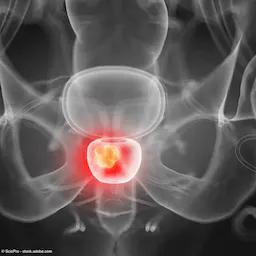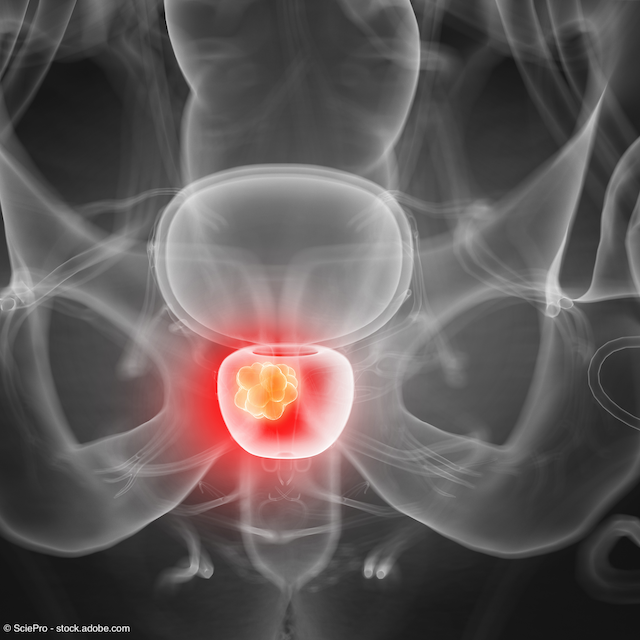Feature
Article
18F-flotufolastat PET/CT shows high inter- and intrareader agreement rates
Author(s):
Key Takeaways
- High interreader and intrareader agreement rates were found, especially in newly diagnosed prostate cancer patients, supporting 18F-Flotufolastat's FDA approval.
- Lower agreement rates in the prostate/prostate bed region in recurrent cases emphasize the need for careful interpretation in this area.
"I think a take-home message there is that in the prostate/prostate bed, you have to take extra time and caution in reading that region," says Phillip H. Kuo, MD, PhD.
In this interview, Phillip H. Kuo, MD, PhD, FACR, shares key findings and takeaways from the study, “Interreader and intrareader reproducibility of 18F-Flotufolastat image interpretation in patients with newly diagnosed or recurrent prostate cancer: Data from two phase 3 prospective multicenter studies,”1 for which he served as the lead author. Kuo is a professor of radiology, section chief of nuclear medicine, and director of theranostics for the department of radiology at City of Hope National Medical Center in Duarte, California.
This transcript was AI generated and edited by human editors for clarity.
Phillip H. Kuo, MD, PhD, FACR

Could you describe the background/rationale for this study?
This study was [conducted using] data from the 2 pivotal phase 3 prospective, multicenter trials that [supported the approval of this agent]. 18F-flotufolastat is often known by the trade name, Posluma. It's the most recently approved PSMA-PET agent by the FDA. The 2 pivotal trials followed a very similar path that we've done for other PSMA-PET agents, which is 1 trial in initial staging and 1 trial in biochemical recurrence. Those were the LIGHTHOUSE (NC04186819) and SPOTLIGHT (NCT04186845) trials, which read out as positive.
In the initial staging [setting] in LIGHTHOUSE, the patient population was men with unfavorable, intermediate- to high-risk prostate cancer; in SPOTLIGHT [it was in the] biochemical recurrent [setting]. [In] the initial staging group, some of the other trials had more high-risk [patients] and did not include unfavorable intermediate-risk patients, so you do have to take that into account if you're trying to compare trials.
We took the data from those trials and performed this FDA-mandated substudy, which was to make sure that radiologists and nuclear medicine physicians can read these images accurately. Particularly for initial staging, there was a lot of standard of truth in the form of histology from the surgery, so that was used for approval, but then you still have to prove that the imaging and the imaging read methodology can be done reproducibly in the real world. That's why you do these interreader and intrareader studies. We took 3 nuclear radiologists and had them look at all these images, and we assessed the agreement rates between all of these.
What were the key findings?
Let’s start with the big picture and then key down into specific regions. These 3 readers were blinded, and they re-read these 2 phase 3 clinical trials for the purpose of reader reproducibility. The pairwise inter-reader agreement, so the agreement between pairs of the 3 readers, was 95% or higher in the newly diagnosed patients, so in initial staging. It's important to note that it’s a little bit lower in the recurrent prostate cancer population—it was 75% there. The intrareader agreement was 86% or higher in both populations.
Of course, the next thing that people want to know is, "What about by region?" We divided up the analysis into the prostate region, pelvic lymph nodes, and other extra pelvic sites. That includes retroperitoneal adenopathy in the abdomen. In the cancer staging system they use, common iliac nodes are counted as extra pelvic, which is not intuitive, necessarily. Of course, bone sites would also be extra pelvic, which is incredibly common with prostate cancer. And then there was a patient level assessment as well.
So, let's first start with the newly diagnosed patient population. In the prostate bed in the newly diagnosed patient population, the pairwise interreader agreement was between 95% and 98%. You can imagine that although these readers were blinded to the Gleason scores and things like that, they all knew that [these patients] were getting a PSMA-PET scan and that this was initial staging, so they knew this patient had prostate cancer. So, it's not that surprising that the reader agreement rates were near perfect for the primary prostate.
In the pelvic lymph nodes, the agreement rates were 92% to 95%, so still very high in the pelvic lymph nodes. In the other extra pelvic sites, it ranged from 81% to 91%, so still very high. But again, those of you who are familiar with PSMA-PET, which I think many people are now, you still get some troubling rib lesions, for example, or focal uptake in other bones that you're not really used to. So, it wasn't too surprising that the agreement rates would drop a little bit for the extra pelvic sites. But still, even the lowest pairwise agreement was 81%. On the patient level, the agreement ranged from 95% to 98%. So, on the patient level, it almost couldn't be higher.
Let's leave the newly diagnosed patient population and go to the biochemical recurrence [setting]. We’ll start with the prostate, or prostate bed, if they've had prostatectomy. This was the area that had the lowest agreement rate throughout the whole study. In the recurrent population in the prostate or prostate bed, the pairwise reader agreement varied from 59% to 84%. That's a real cautionary tale, and I think that probably applies to just about all the tracers, where the prostate/prostate bed can be a little tricky. It's a balance, just like with everything you do in radiology, of sensitivity and specificity. Oftentimes in the real world, if you can't find an obvious source of the PSA rise elsewhere, you start to read the prostate or prostate bed more sensitively. There could urinary activity in that area, which can be confounding. I think a take-home message there is that in the prostate/prostate bed, you have to take extra time and caution in reading that region.
But [aside from] that region, in the biochemically recurrent patient population, in the pelvic lymph nodes, the reader agreement rates were 87% to 89%, so almost 90%. In extrapelvic sites, it was 82% to 85%, so similar to what we see in the newly diagnosed population. On the patient level, it was 75% to 86%. [This was] brought down compared to the initial staging due to the lower agreement rates in that prostate/prostate bed. Clinically, one might say, if you had to have the lowest agreement rate in a particular region, that's probably the least important one.
What is the key take-home message from this study?
Overall, [these data] show that this tracer, which is now the most newly approved one, has high interreader and intrareader agreement rates, and [that] was a big factor in getting it approved by the FDA. Like with all imaging in PSMA-PET, there are false positives. You do have to follow the reader methodology. I always like to tell people you're constantly learning, so follow up on indeterminate findings and follow up with your surgeons. Whenever you see a case again, look back at the prior and try to get into your own memory bank how you should be reading these things for maximum sensitivity and specificity.
Is there any future work planned based on this study?
It's very interesting. I'm a bit of a chemistry nerd. One of the interesting things about this radiopharmaceutical is it was originally designed as what we call radiohybrid. It is being used as purely a diagnostic agent in this trial and for development. There are no current plans, as far as I know, to develop it as anything more than a diagnostic. But it has that F 18 label, which is just like what we use for FDG and another PSMA-PET agent. It has a chelator arm, so you could label it with a therapeutic radioisotope, like we do with Pluvicto, or 177Lu-PSMA-617. This was designed that you could image and treat in 1 molecule, and a related radiohybrid molecule is being tested as therapeutic.
In the close characterization of the molecule, it has slower renal excretion than some of the other approved PSMA-PET agents—at least when you compare it against other trials and not in a single patient. I published another article with my colleagues at Blue Earth Diagnostics, which showed that retrospectively, when you compare across other studies, there is less urinary activity in the bladder and in the ureters, and that may convey a potential advantage for detecting disease around your excreted activity in the urine. You could potentially, for example, pick up a small node, or have greater confidence in a small node next to a ureter, or a small node or local recurrence in the prostate bed near the urinary bladder, where high activity might otherwise obscure it. That is very much a potential advantage, and to the urinary radioactivity is currently being explored in a head-to-head fashion in a study where all patients receive both Posluma and the other F18 PSMA agent, Pylarify. We may get additional detection rates results for both tracers in that intra-patient study. So, stay tuned for that.
REFERENCE:
1. Kuo PH, Esposito G, Ulaner GA, et al. Interreader and intrareader reproducibility of 18F-Flotufolastat image interpretation in patients with newly diagnosed or recurrent prostate cancer: Data from two phase 3 prospective multicenter studies. J Nucl Med. 2024;65(8):1239-1243. doi:10.2967/jnumed.123.267306















